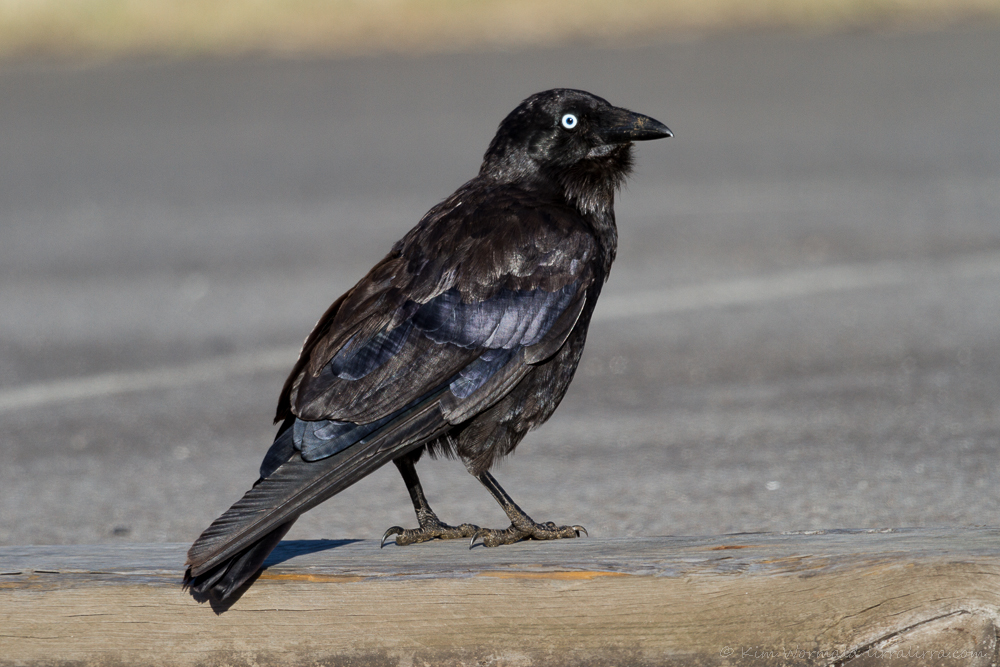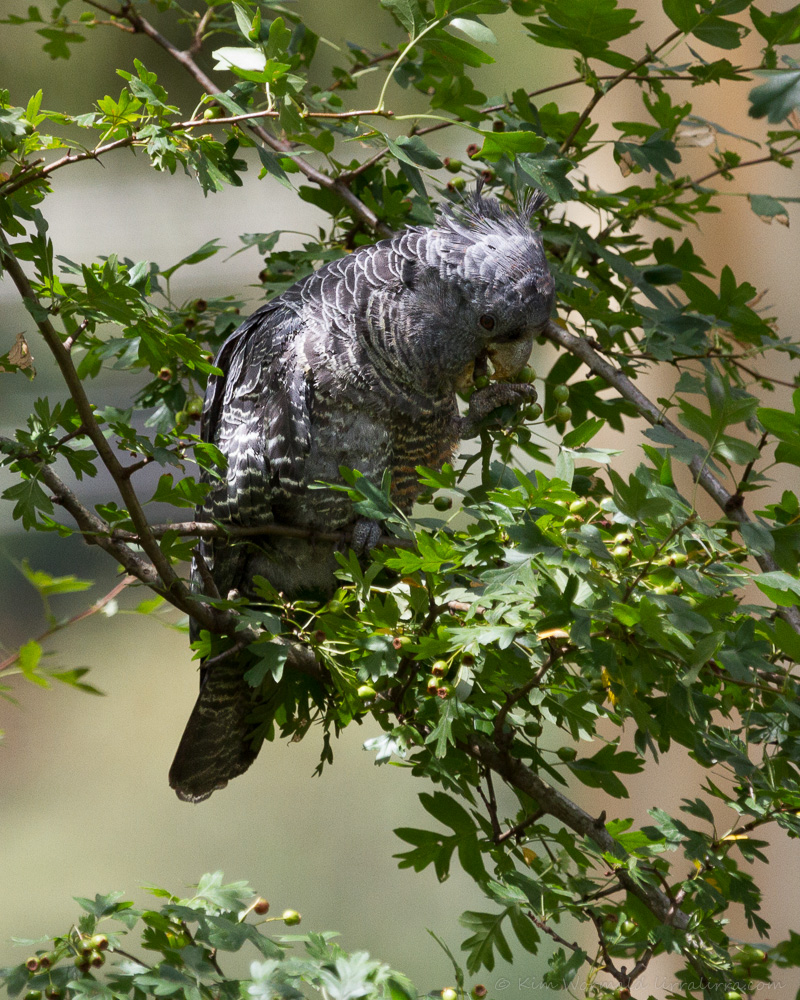Wrens, raven and Gang-gang Cockies have nothing to do with each other except that it was time for a photo-blog medley.
I spent a week perched on a fallen tree watching Superb Fairy-wrens taking food to their nestlings, not the entire week, not 24 hours a day, though it was tempting. One of the wrens’ staging branches where they looked around before flying to their nest was fairly close to me and often they came even closer looking for bugs and grubs.
 Superb Fairy-wren (Malurus cyaneus) (male)
Superb Fairy-wren (Malurus cyaneus) (male)
Canon 7D, 100-400mm L IS USM, 1/640, f/5.6, ISO 100, focal length 365mm
 Superb Fairy-wren (Malurus cyaneus) (female)
Superb Fairy-wren (Malurus cyaneus) (female)
Canon 7D, 100-400mm L IS USM, 1/640, f/5.6, ISO 640, focal length 400mm
I could hear the Superb Fairy-wren babies twittering when ma or pa arrived but I did not look for the nest which was low to the ground amongst reeds and long grass. I was looking forward to seeing the fledglings snuggled together on a branch but sadly it didn’t happen. Instead we had a 40 degrees C day which the babies did not survive. I went to my usual spot the following day and saw no activity. I hoped, just a little hope, that they had fledged but there was no sight nor sound of wrens. I whispered to the parents asking them to let me know what was happening and within moments the male landed less than 2 metres in front of me, closely followed by the female. They began preening each other, allopreening is part of the pre-nesting ritual. The nest had failed. They stayed near me for almost half an hour, there were definitely no babies to feed. I took no photographs.
 Australian Raven (Corvus coronoides)
Australian Raven (Corvus coronoides)
Canon 7D, 100-400mm L IS USM, 1/500, f/5.6, ISO 160, focal length 370mm
Driving into an empty beach carpark just before sunset one evening I noticed how the low-angled light made this lone raven look amazing. Usually they look just black, and without the perfect exposure images look like black blobs without any feather detail. The raven didn’t call so I thought the image would be labelled ‘corvid species’ but photography is brilliant for showing details that teach me new things. I couldn’t see long throat hackles so was guessing Little Raven until I noticed the bare patch of skin just beneath the bill. Apparently this bare inter-ramal area is diagnostic for Australian Ravens – YAY!
 Gang-gang Cockatoo (Callocephalon fimbriatum) (male)
Gang-gang Cockatoo (Callocephalon fimbriatum) (male)
Canon 7D, 100-400mm L IS USM, 1/640, f/7.1, ISO 500, focal length 400mm
 Gang-gang Cockatoo (Callocephalon fimbriatum) (female)
Gang-gang Cockatoo (Callocephalon fimbriatum) (female)
Canon 7D, 100-400mm L IS USM, 1/640, f/7.1, ISO 640, focal length 375mm
I nearly walked past these striking Gang-gang Cockatoos, if the male hadn’t nodded his wispy topknot I wouldn’t have seen either of them. I’d taken several shots of the male before I noticed the female and now I’m wondering if there were juveniles hiding amongst the foliage! There’s always something beautiful to see in the great outdoors, which is where I’m going now.
Happy birding, Kim

[…] Little Ravens and Australian Ravens both visit my property and I usually distinguish them by their calls. The Aussie ravens’ call is higher-pitched, much slower and its drawn-out final note is longer than that of the littles. I used to think I could tell by the throat hackles, until I realised that both species have hackles though sometimes the hackles are so long and shaggy that it’s easy to identify the bird as an Aussie. My favourite way to identify the species is by the presence or absence of an interramal featherless patch beneath the bill. Only the Aussies have the patch, which is generally difficult to see in the field but can be seen in clear images, as in a previous lirralirra post Wrens, raven and Gang-gang Cockatoos […]
[…] blue and black typical of breeding males, which can be seen in several lirralirra posts including Wrens, raven and Gang-gang Cockatoos and Superb Fairy-wrens. I’m very interested in the behaviour I witnessed this week and am […]
You should send the male gang gang to Diane 🙂 So sad about the Blue Wren babies 🙁 poor wee wanes.
He’s a real character, I think you’re right, she’d probably like to see him. It is sad about those little bubs, hopefully there’s time for them to try again this season.
Wow Kim, I had never seen the Gang-gang Cockatoo until now, they are wonderful looking birds!
🙂